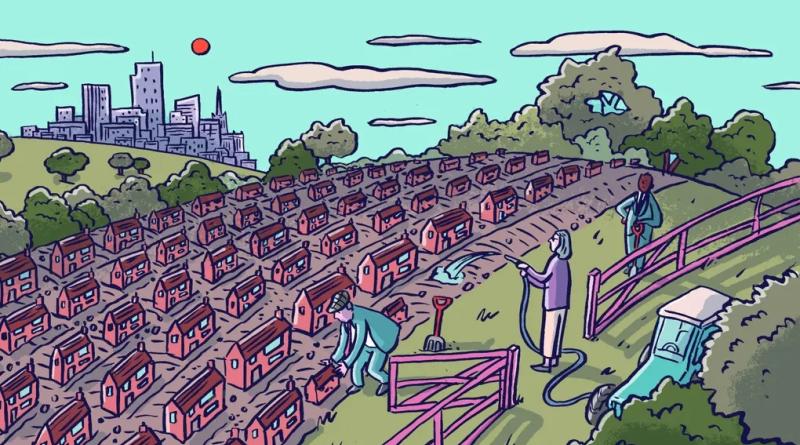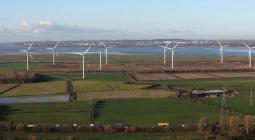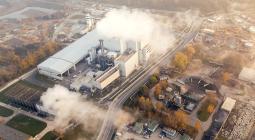Green belts once served a vital purpose, but now they are squeezing the life out of cities

Imagine a reservoir of wealth, worth very many billions of pounds, a latter-day North Sea oil, lying underneath the country. One that, what’s more, is public property. What government would not want to turn it to the benefit of its favoured policies – for example to ending the nation’s eternally unsolved housing crisis, to returning to young and not-so-young people the degree of access to decent housing that former generations enjoyed?
This reservoir exists. It consists of the potential value of land that is released when planning permission is granted for housing, or other profitable development. Thanks to the postwar government of Clement Attlee, whose nationalisation of development rights is still partly unprivatised, it belongs to government. It could be extremely helpful to a future Labour administration, if it seriously wants to restore, as Keir Starmer put it last week, both economic renewal and the housing security that “working people… desperately need”.
In a speech to the British Chambers of Commerce and in broadcast interviews, Starmer proposed a reformed planning system and a return of the targets for new homes recently abandoned by Rishi Sunak’s government, without which “housebuilding will drop probably to its lowest level since the Second World War”. He said he would back “the builders, not the blockers”, by which he meant the more unreasonable opponents of new development. He hoped that house prices would come down, “relative to income” – a quietly remarkable statement, given that leaders of both main parties have supported house price inflation for at least 40 years. He appears to be taking sides in an intergenerational contest between housing haves and have-nots. “A generation and its hopes, an entire future,” he said, is “blocked by those, who more often than not, enjoy the secure homes and jobs that they’re denying to others.” He seems also to have spotted an opportunity to exploit a Conservative weakness, its division between those who want to “conserve”, as the name suggests, and those who want to build.
He tentatively suggested that some new development may be allowed on the nation’s green belts, which made front-page headlines. For this he got some flak from his own party, in the shape of the former shadow chancellor, John McDonnell, for whom the green belt is a proud achievement of Attlee and other Labour politicians. It is, he said, “the fundamental basis of a battle to protect the environment in working-class urban constituencies like mine”.
McDonnell is right that the green belt originated in a desire to give the populations of big industrial cities access to nature and fresh air. They still perform that role in constituencies like his, the outer London suburb of Hayes and Harlington. But they also now achieve the opposite effect, which is to squeeze the space available to city dwellers, with harmful effects on their health and lives. They put pressure on rural areas not blessed by the green belt designation.His invocation of old Labour triumphs overlooks a key point, which is that the government elected in 1945, alongside its implementation of green belts, also initiated a programme of building new towns, which created communities where 2.8 million people now live. Inspired by Ebenezer Howard’s idea of the garden city, the new towns were built by public development corporations, which bought the land and recycled its profits to pay for such things as parks, infrastructure and affordable housing. These principles, with due allowance for the ways in which the world has changed since the 1940s, could have similar effects now.
There’s a libertarian belief, expressed by some conservative commentators, that all housing problems would be solved if only the market were released from planning controls. It’s a fantasy: given that most people want planning at some time or another, when it protects them from activities harmful to their lives or to the environment, it’s not going to disappear. And private housebuilding companies have always been averse to building in such numbers that prices would become more affordable, which would damage their profits.
Nor are they the best organisations to build the schools and plant the trees that help create good places to live. What actually happens when planning restrictions are relaxed – for example, so that agricultural land can be used for housing – is that those who own it see its value rise, sometimes by huge multiples. It’s true that leviesand contributions for public benefits are raised on developers when planning permission is granted, but otherwise a bit of that reservoir of wealth of development potential is handed from the public to those lucky landowners, to spend on second homes or retirement plans or whatever else they fancy.
Green belts are vast. They occupy 12.6% of the area of England. The one around London is three times the size of the city itself. It’s absurd to say that designations made decades ago should never be altered, and that building even on a fraction of that land should be forbidden. At the same time, the principle of preserving green spaces for public enjoyment remains as important as it ever was, and residents of green belts have as much right as anyone else to have the quality of their lives protected. Building there has to be done with care, which again the private sector is unlikely to do by itself.
Starmer’s proposals are light on detail. He says he wants to reform planning without saying how. He has so far spoken mostly of expanding home ownership, which has been in decline since 2003. This would be popular and transformative, but Labour also needs to help those who cannot or do not want to own, by expanding the supply of affordable and good quality homes to rent.
In his remarks last week, Starmer mumbled something about “development corporations”, the agencies that among other things achieved the new towns – not a glamorous term but an important one. If he is serious about affordable, decent and secure homes, he can’t just leave them to private house builders. His prospective government, with the help of that untapped wealth, will have to take the lead.
cover photo: Illustration: Dominic McKenzie/The Observer





